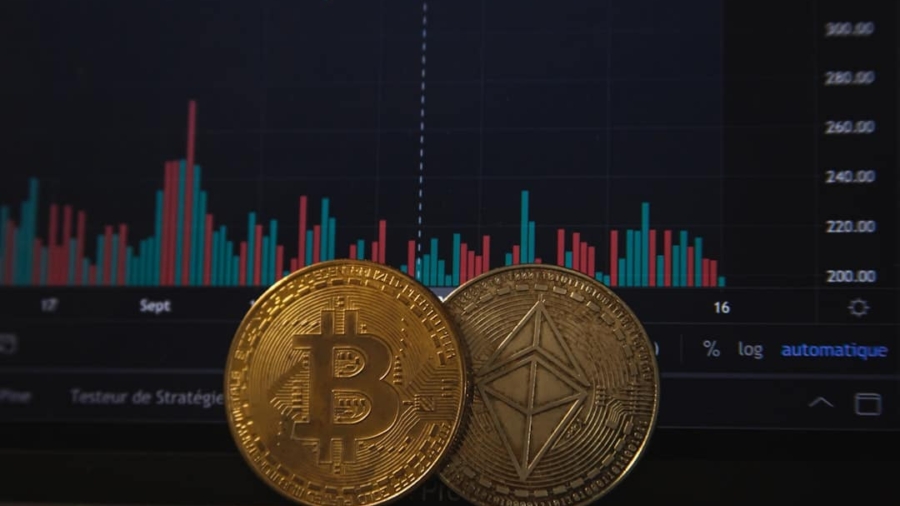Blockchain technology has emerged as a revolutionary force across various sectors, fundamentally altering how data is stored, shared, and verified. At its core, blockchain is a decentralized digital ledger that records transactions across multiple computers in such a way that the registered transactions cannot be altered retroactively. This characteristic ensures a high level of security and trust, as each block in the chain contains a cryptographic hash of the previous block, along with a timestamp and transaction data.
The decentralized nature of blockchain eliminates the need for intermediaries, allowing for peer-to-peer transactions that are both efficient and transparent. The potential applications of blockchain extend far beyond cryptocurrencies like Bitcoin. Industries ranging from finance to healthcare are exploring how this technology can enhance operational efficiency and security.
In particular, the food industry is beginning to recognize the transformative potential of blockchain in addressing long-standing issues related to traceability, safety, and fraud. As consumers become increasingly concerned about the origins of their food and the integrity of the supply chain, blockchain offers a promising solution to enhance transparency and accountability.
Key Takeaways
- Blockchain technology is a decentralized and secure way of recording transactions and data, making it ideal for enhancing traceability in food safety.
- Traceability in food safety is crucial for identifying and addressing issues such as contamination and fraud, and blockchain technology can greatly improve this process.
- Blockchain enhances transparency in the food supply chain by providing a secure and unchangeable record of every transaction and movement of food products.
- Blockchain plays a key role in preventing food fraud and contamination by enabling real-time tracking and verification of food products from farm to table.
- Successful case studies have demonstrated the effective implementation of blockchain in food traceability, leading to improved safety and security in the food supply chain.
The Importance of Traceability in Food Safety
Traceability in food safety refers to the ability to track and trace food products through every stage of the supply chain, from farm to table. This capability is crucial for several reasons, primarily concerning public health and consumer confidence. In the event of a foodborne illness outbreak, rapid traceability allows authorities to identify the source of contamination quickly, thereby minimizing health risks and preventing further spread.
For instance, during the 2006 E. coli outbreak linked to spinach, swift traceability efforts enabled investigators to pinpoint the contaminated farms, leading to timely recalls and reduced illness rates. Moreover, traceability fosters consumer trust in food products.
As awareness of food safety issues grows, consumers are increasingly demanding transparency regarding the origins and handling of their food. They want assurance that their food is safe, ethically sourced, and free from harmful substances. Traceability systems that provide detailed information about a product’s journey through the supply chain can help build this trust.
How Blockchain Enhances Transparency in the Food Supply Chain

Blockchain technology enhances transparency in the food supply chain by providing an immutable record of every transaction that occurs at each stage of production and distribution. Each participant in the supply chain can access this shared ledger, which contains real-time data about product origins, processing methods, and transportation conditions. This level of transparency not only empowers consumers but also enables businesses to monitor their supply chains more effectively.
For example, when a farmer harvests crops, they can record details such as the date of harvest, location, and any pesticides used on the blockchain. As the produce moves through various stages—processing, packaging, and distribution—each step is logged in real-time. Retailers can then access this information to verify claims about organic certification or sustainability practices.
This transparency helps reduce information asymmetry between producers and consumers, allowing for more informed purchasing decisions. Furthermore, blockchain can facilitate collaboration among stakeholders in the supply chain. By providing a single source of truth that all parties can trust, it encourages cooperation and communication between farmers, processors, distributors, and retailers.
This collaborative environment can lead to improved efficiency and reduced costs as stakeholders work together to optimize processes based on shared data insights.
The Role of Blockchain in Preventing Food Fraud and Contamination
Food fraud—defined as the deliberate misrepresentation of food products for economic gain—poses significant risks to consumer safety and industry integrity. Blockchain technology plays a pivotal role in combating food fraud by ensuring that all claims made about a product can be verified through an immutable record. For instance, if a company claims that its fish is sustainably sourced or that its beef is grass-fed, blockchain can provide verifiable proof of these claims through documented evidence at each stage of production.
In addition to preventing fraud, blockchain also enhances food safety by enabling better monitoring of contamination risks throughout the supply chain. For example, temperature-sensitive products like dairy or meat require strict temperature controls during transportation and storage. By integrating Internet of Things (IoT) devices with blockchain technology, companies can continuously monitor temperature conditions and log this data on the blockchain.
If a temperature breach occurs, stakeholders can be alerted immediately, allowing for swift action to prevent contaminated products from reaching consumers. Moreover, blockchain’s ability to create a transparent audit trail means that companies can conduct more effective recalls when necessary. In cases where contamination is detected, businesses can quickly identify affected batches by tracing back through the blockchain records.
This rapid response not only protects public health but also helps maintain brand reputation by demonstrating a commitment to safety and accountability.
Case Studies of Successful Implementation of Blockchain in Food Traceability
Several companies have successfully implemented blockchain technology to enhance food traceability, showcasing its potential benefits across the industry. One notable example is Walmart’s collaboration with IBM on the Food Trust initiative. Walmart has utilized blockchain to track the origin of its produce, significantly reducing the time required to trace products from store shelves back to their source.
In one pilot project involving mangoes from Mexico, Walmart was able to trace the fruit’s journey in just 2.
This rapid traceability not only improves food safety but also enhances operational efficiency. Another compelling case study is that of Nestlé, which has employed blockchain technology to provide consumers with detailed information about its products’ origins.
Through its partnership with IBM’s Food Trust platform, Nestlé has enabled consumers to scan QR codes on packaging to access information about sourcing practices and supply chain transparency. This initiative not only builds consumer trust but also aligns with Nestlé’s commitment to sustainability by allowing customers to make informed choices based on ethical considerations. Additionally, companies like De Beers have applied similar principles in their diamond supply chains by using blockchain to ensure ethical sourcing practices.
While not directly related to food safety, this example illustrates how blockchain can be leveraged across various industries to enhance transparency and prevent fraud.
The Potential Challenges and Limitations of Using Blockchain in Food Safety

Despite its numerous advantages, implementing blockchain technology in food safety does come with challenges and limitations that must be addressed for widespread adoption. One significant hurdle is the need for standardization across the industry. Currently, various stakeholders may use different blockchain platforms or protocols, leading to fragmentation that undermines interoperability.
For effective traceability systems to function seamlessly across diverse supply chains, there must be consensus on standards that all participants can adhere to. Another challenge lies in data accuracy and integrity. While blockchain itself is immutable once data is recorded, it does not inherently guarantee that the information entered into the system is accurate or truthful.
If incorrect or fraudulent data is inputted at any stage—whether intentionally or due to human error—the entire traceability system can be compromised. Therefore, robust verification processes must be established to ensure that only accurate information is recorded on the blockchain. Moreover, there are concerns regarding privacy and data security.
While transparency is a key benefit of blockchain technology, sensitive business information may need protection from competitors or malicious actors. Striking a balance between transparency for traceability purposes and confidentiality for competitive advantage presents a complex challenge for organizations looking to implement blockchain solutions.
The Future of Blockchain Technology in Improving Food Traceability
The future of blockchain technology in improving food traceability appears promising as more companies recognize its potential benefits. As consumer demand for transparency continues to grow, businesses are likely to invest in blockchain solutions that enhance their supply chain visibility and accountability. The integration of advanced technologies such as artificial intelligence (AI) and machine learning with blockchain could further optimize traceability systems by enabling predictive analytics and real-time monitoring.
Additionally, regulatory bodies may begin to adopt blockchain as a standard practice for food safety compliance. Governments around the world are increasingly focused on enhancing food safety measures in response to rising consumer concerns about health risks associated with contaminated products. By establishing frameworks that encourage or mandate the use of blockchain for traceability purposes, regulators could drive broader adoption across the industry.
Furthermore, as more success stories emerge from early adopters of blockchain technology in food traceability, it is likely that additional stakeholders will join these initiatives. Collaborative efforts among producers, retailers, technology providers, and regulatory agencies could lead to more comprehensive solutions that address not only traceability but also sustainability and ethical sourcing practices.
The Impact of Blockchain on Ensuring Safe and Secure Food Supply Chains
The impact of blockchain technology on ensuring safe and secure food supply chains cannot be overstated. By enhancing traceability and transparency throughout every stage of production and distribution, blockchain addresses critical challenges related to food safety and fraud prevention. As demonstrated by successful case studies from industry leaders like Walmart and Nestlé, implementing blockchain solutions can lead to significant improvements in operational efficiency while fostering consumer trust.
While challenges remain regarding standardization, data accuracy, and privacy concerns, ongoing advancements in technology and collaborative efforts among stakeholders hold promise for overcoming these obstacles. As we look toward the future, it is clear that blockchain will play an increasingly vital role in shaping a safer and more transparent food supply chain—ultimately benefiting consumers and producers alike by ensuring that food products are safe, ethically sourced, and trustworthy.
In the realm of technological advancements, blockchain has emerged as a pivotal tool in enhancing traceability within the food safety sector. This innovative technology ensures that every step of the food supply chain is transparent and verifiable, thereby significantly reducing the risk of contamination and fraud. A related article that explores the transformative potential of technology in a different domain is New World of Possibilities with the Samsung Galaxy Chromebook 4. This piece delves into how cutting-edge devices like the Samsung Galaxy Chromebook 4 are opening up new avenues for efficiency and innovation, much like how blockchain is revolutionizing food safety.
FAQs
What is blockchain technology?
Blockchain technology is a decentralized, distributed ledger that records transactions across many computers in such a way that the registered transactions cannot be altered retroactively.
How does blockchain improve traceability in food safety?
Blockchain improves traceability in food safety by providing a transparent and immutable record of every transaction and movement of food products throughout the supply chain. This allows for quick and accurate identification of sources of contamination or other safety issues.
What are the benefits of using blockchain for food traceability?
Some benefits of using blockchain for food traceability include increased transparency, improved food safety, reduced risk of fraud, and enhanced consumer trust. It also allows for faster and more precise recalls in the event of a safety issue.
How does blockchain technology ensure the accuracy of food traceability data?
Blockchain technology ensures the accuracy of food traceability data by creating a tamper-proof record of every transaction and movement of food products. This record is accessible to all parties involved in the supply chain, and any changes to the data are visible to all, making it difficult to manipulate the information.
What are some examples of companies using blockchain for food traceability?
Several companies are using blockchain for food traceability, including Walmart, Nestle, and Unilever. These companies are leveraging blockchain technology to track the origin and journey of their food products from farm to table, ensuring safety and quality for consumers.

